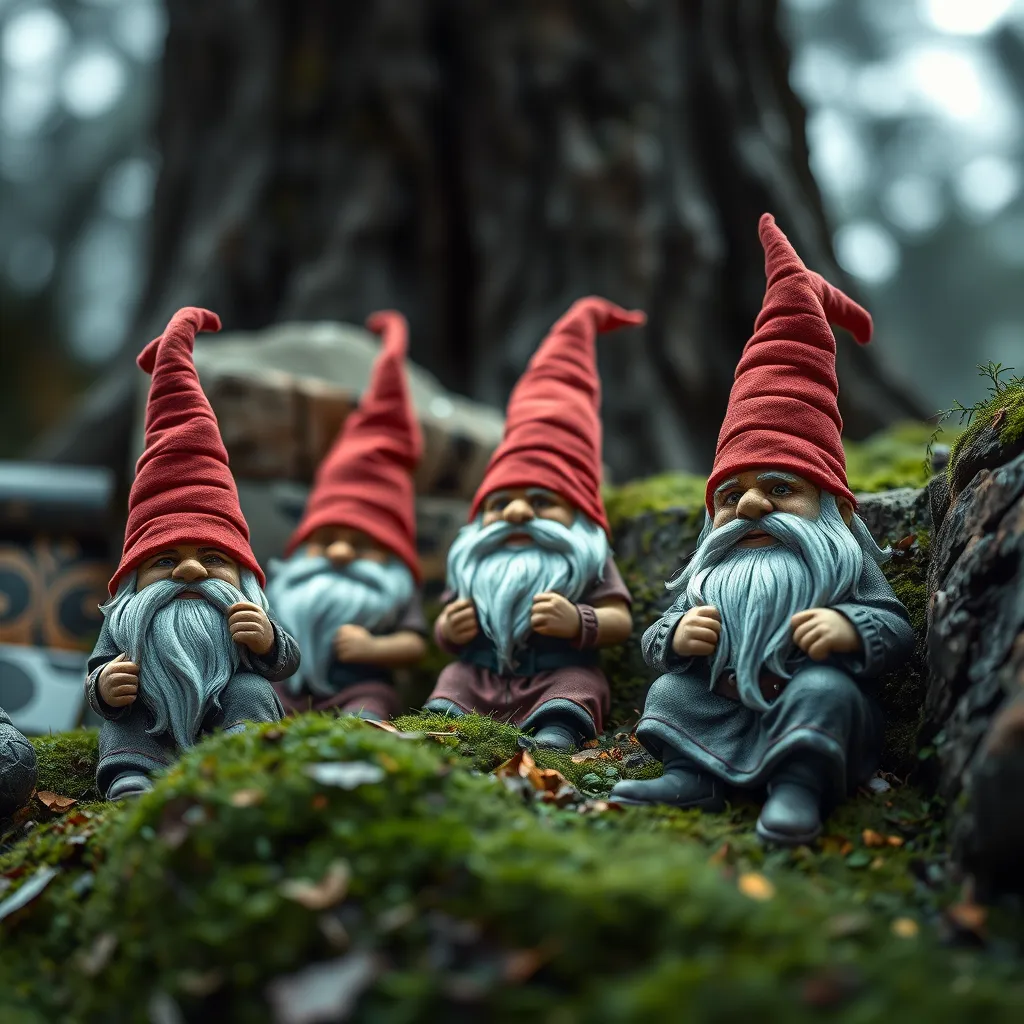Gnome Legends Around the World: A Global Exploration of Folk Traditions
I. Introduction
Gnomes, often depicted as small, bearded men wearing pointy hats, have fascinated people for centuries. These mythical creatures are steeped in folklore, appearing in various cultures across the globe. Traditionally seen as guardians of the earth and nature, gnomes hold significant places in the hearts and imaginations of many.
The importance of gnomes in various cultures is multifaceted, encompassing themes of protection, agriculture, and the natural world. By exploring global gnome legends, we can gain insight into how different societies view the relationship between humanity and nature, as well as the role of folklore in shaping cultural identities.
II. Origins of Gnome Mythology
The origins of gnome mythology can be traced back to ancient civilizations. Historically, gnomes were often associated with underground realms, where they were believed to guard treasures and minerals. Over time, the imagery and symbolism associated with gnomes evolved, reflecting changes in societal values and beliefs.
In many traditions, gnomes symbolize a deep connection to nature and the earth. They are often seen as the caretakers of the land, embodying the spirit of the natural world. This connection underscores the importance of environmental stewardship in folklore.
III. Gnomes in European Folklore
In Europe, gnome traditions are particularly rich, especially in German and Scandinavian cultures.
A. German and Scandinavian gnome traditions
- The Tomte and Nisse: In Sweden and Norway, gnomes are known as Tomte and Nisse. These small creatures are often depicted as benevolent household spirits who protect families and their livestock.
- Role in agricultural practices: Gnomes were believed to assist in farming, ensuring good harvests and protecting crops from pests. Farmers would often leave offerings of food to appease these spirits.
The influence of gnome legends extends beyond folklore into fairy tales and literature. Authors like the Brothers Grimm have incorporated gnome-like figures into their stories, further embedding these creatures in popular culture.
In contemporary society, gnomes have been adapted in various ways, from garden decorations to characters in movies and children’s books, illustrating their enduring appeal and cultural significance.
IV. Gnome Legends in Slavic Culture
In Slavic folklore, gnomes are often represented by the Domovoi, a household spirit that watches over families.
A. Domovoi: The household spirit
The Domovoi is believed to reside in the hearth and is responsible for the well-being of the household. Families would often perform rituals to honor the Domovoi, such as leaving offerings of bread or milk.
B. Role of gnomes in rural Slavic communities
In rural Slavic communities, gnomes were seen as protectors of the home and land, reflecting the agrarian lifestyle of these societies. Encounters with gnome-like beings were often met with caution and respect.
C. Rituals and beliefs surrounding gnome encounters
Various rituals were practiced to ensure harmony with these spirits, including:
- Keeping the household clean and tidy to please the Domovoi.
- Performing seasonal rituals to ensure a good harvest.
V. Gnomes in Asian Folklore
Gnome-like figures also appear in Asian folklore, albeit under different names and characteristics.
A. Japanese Yōkai and their similarities to gnomes
In Japan, Yōkai are supernatural beings that share similarities with gnomes, often possessing mischievous or benevolent traits. These creatures can be guardians of nature, similar to their European counterparts.
B. Chinese Earth Spirits and their roles in nature
In Chinese culture, earth spirits are believed to inhabit landscapes and protect the land. These spirits emphasize the importance of nature in Chinese philosophy and agriculture.
C. Comparisons and contrasts with Western gnome legends
While Western gnomes are often characterized as small, bearded men, Asian spirits can take on various forms, reflecting the diverse interpretations of nature spirits across cultures.
VI. Gnome Figures in Indigenous Cultures
Indigenous cultures around the world also feature gnome-like figures that connect deeply with nature.
A. Connections to earth and nature spirits in Native American traditions
Many Native American tribes believe in earth spirits that resemble gnomes. These spirits are seen as guardians of the land, embodying the values of respect and harmony with nature.
B. Gnome-like beings in African folklore
In various African cultures, small spirit beings are believed to inhabit the earth, playing roles similar to gnomes in Western traditions. They are often associated with fertility, agriculture, and the protection of natural resources.
C. Symbolism and cultural significance
The symbolism surrounding these beings often emphasizes community, sustainability, and the interconnectedness of all living things.
VII. Contemporary Interpretations of Gnome Legends
In modern times, gnome legends have found new life in literature, film, and art.
A. Gnomes in modern literature, film, and art
Popular culture has embraced gnomes, portraying them in various ways. From children’s stories to adult fantasy novels, gnomes have become beloved characters.
B. The commercialization of gnome imagery
The commercialization of gnome imagery, particularly garden gnomes, has transformed these mythical beings into whimsical decor. This shift has both positive and negative implications for the cultural significance of gnomes.
C. How gnome legends influence current environmental movements
The enduring image of gnomes as guardians of the earth has inspired many environmental movements, promoting themes of sustainability and care for the planet.
VIII. Conclusion
Gnome legends offer a rich tapestry of stories and beliefs that reflect the diverse ways cultures understand their connection to nature. From European traditions to Asian folklore and indigenous beliefs, gnomes serve as symbols of protection, stewardship, and the spirit of the earth.
The enduring appeal of gnome legends across cultures invites us to explore local folklore and traditions, encouraging a deeper appreciation for the myths that shape our understanding of the world around us.
